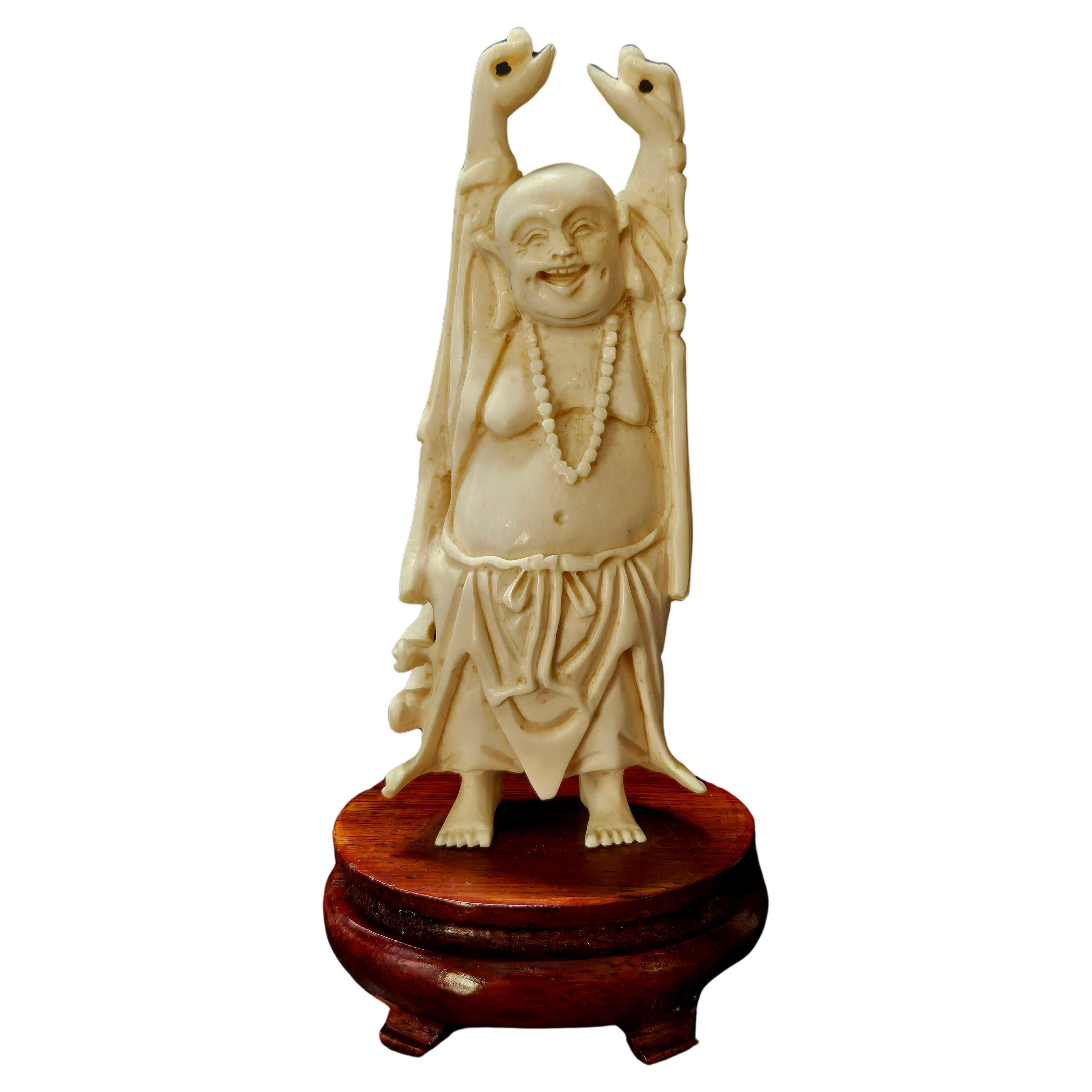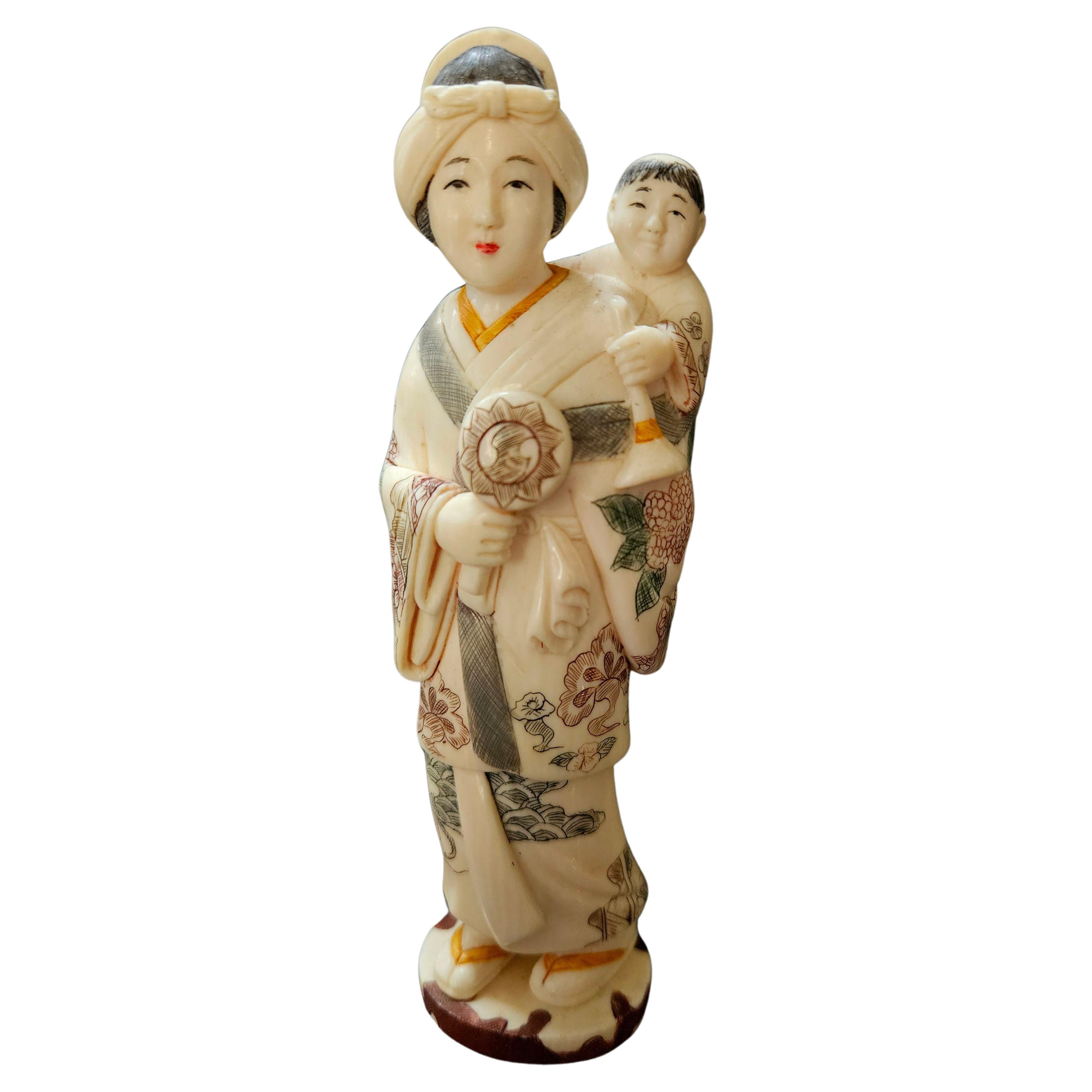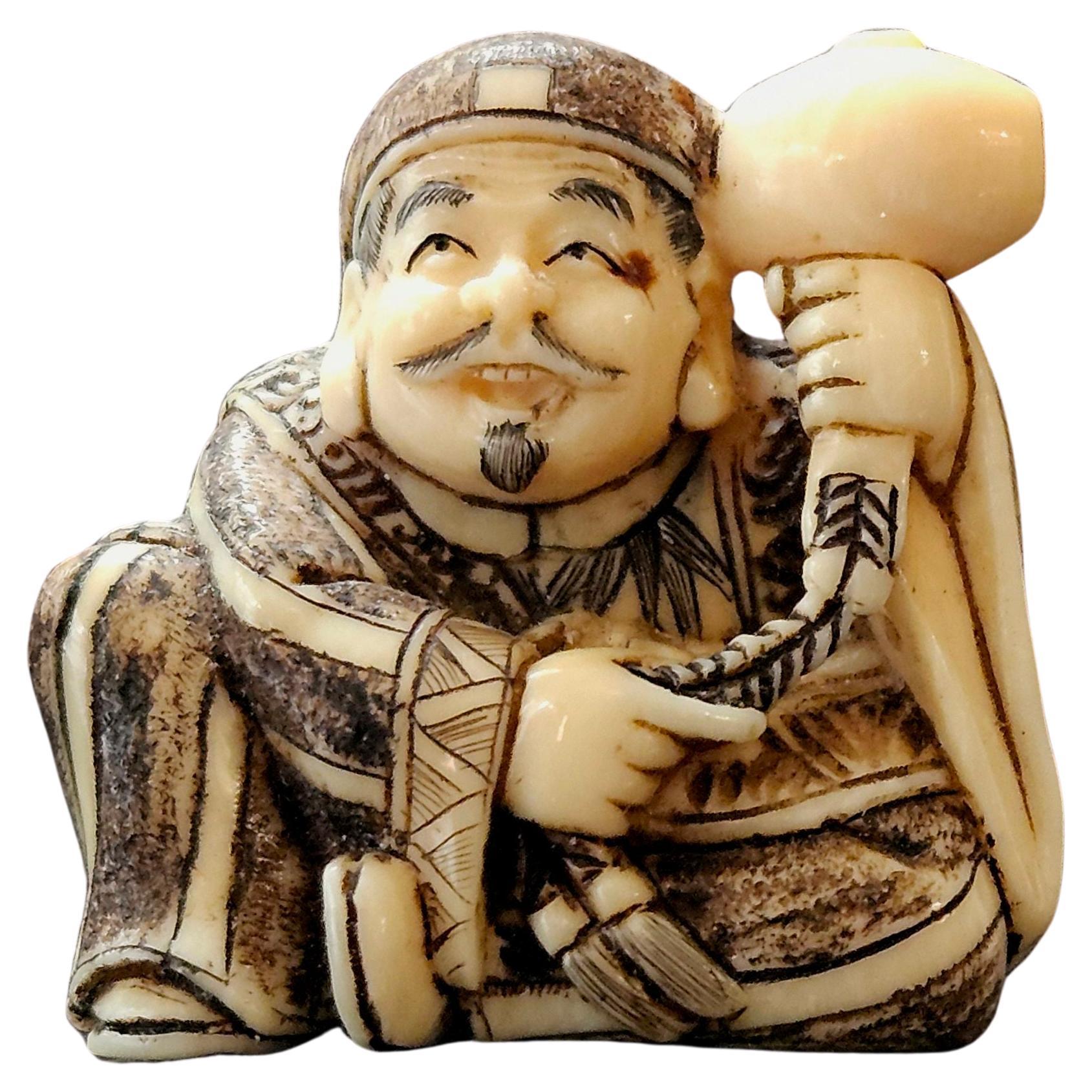Items Similar to Japanese Carved Okimono Polychrome Birds by Tenzan (天山), Meiji Period
Video Loading
Want more images or videos?
Request additional images or videos from the seller
1 of 16
Japanese Carved Okimono Polychrome Birds by Tenzan (天山), Meiji Period
About the Item
Japanese Carved Okimono Polychrome Birds, Signed by Tenzan (天山) on the bottom, Meiji Period.
A truly hand-carved ivory figure with fine craftsmanship in a detailed carving
Dimension:
Large: 2.75" W x 2" H x 1.5" D
Small: 2.5" W x 1.75" H x 1" D
This item is in excellent condition with no damages.
Shipping Note: USA only, no International shipping
- Dimensions:Height: 2 in (5.08 cm)Width: 2.75 in (6.99 cm)Depth: 1.5 in (3.81 cm)
- Sold As:Set of 2
- Materials and Techniques:
- Place of Origin:
- Period:
- Date of Manufacture:19th Century
- Condition:Wear consistent with age and use. Wear consistent with age and use.
- Seller Location:Norton, MA
- Reference Number:1stDibs: LU5848239736812
About the Seller
5.0
Platinum Seller
These expertly vetted sellers are 1stDibs' most experienced sellers and are rated highest by our customers.
Established in 2000
1stDibs seller since 2021
88 sales on 1stDibs
Typical response time: 1 hour
- ShippingRetrieving quote...Ships From: Norton, MA
- Return PolicyA return for this item may be initiated within 3 days of delivery.
More From This SellerView All
- Antique Japanese Carved Okimono Polychrome Decorated Group by Gyokko MeijiLocated in Norton, MAAntique Japanese Carved Okimono Polychrome Decorated Figure Group seated on a wood stand, signed by Gyokko, depicting a seated artisan carving and decorating a figure of a happy Bud...Category
Antique 19th Century Japanese Decorative Boxes
MaterialsIvory, Paint
- Antique Japanese Carved Okimono Happy Buddha, Meiji PeriodLocated in Norton, MAAntique Japanese Carved Okimono Mixed Material Figure "Happy Buddha on Stand", Meiji Period This item is 2" wide x1.5" deep x 5" high in dimension, the wood stand measures 3" W x 2...Category
Antique 19th Century Japanese Decorative Boxes
MaterialsIvory, Paint
- Antique Japanese Carved Okimono Polychrome Decorated Group Mother & Son, MeijiLocated in Norton, MAAntique Japanese Carved Okimono Polychrome Decorated Figure Group Mother & Son, Meiji Period This item is 2" wide x1 5/8" deep x 6" high in dimension, from the late 19th century, a...Category
Antique 19th Century Japanese Decorative Boxes
MaterialsIvory, Paint
- Japanese Carved Netsuke Polychrome Figure by Matsuyoshi松吉 Meiji PeriodLocated in Norton, MANetsuke Japanese Hand-Carved Polychrome Figure depicts a man holding a large hammer, Signed by Matsuyoshi 松吉 on the bottom from the Meiji period. A truly hand-carved ivory figure with fine craftsmanship in a detailed carving This item is 1.5" wide x1" deep x 1.5" high in dimension, from the 19th century. This item is in excellent condition with no damages. Shipping Note: USA only, no International shipping The Essence of Netsuke: Like all art objects of great worth, netsuke distills the essence of a specific time and place. Worn as part of a traditional Japanese man’s ensemble from the 17th century onwards, the netsuke’s purpose was hyper-specific, and its functional simplicity lent artists unlimited freedom to constantly redefine what it could be. Formally, netsukes have few requirements: they must be small, they must have holes through which to pass a single cord, and they must have no protuberances that could damage one’s kimono. Everything else is left to the carver’s imagination. As such netsuke differs in style, subject, and material as widely as the personalities of their makers, and they are consequently supremely collectible. Netsuke emerged as a practical solution to dressing in 17th-century Japan. ‘Men’s kimonos didn’t have sewn-up sleeves — they were completely open, front and back, and that meant that the sleeves couldn’t be used as a pocket, as they could in women’s kimonos,’ Goodall explains. To carry things such as tobacco, medicine, or other necessities, men hung stylish inro and other vessels from cords looped under and behind the wide sashes that held their kimonos in place. At the other end of those cords, men fastened small, ornamental objects as counterweights; those objects evolved into netsuke. The netsuke’s origins are still ‘theoretical’, Goodall says. ‘It’s thought that, with increasing imports from China in the late 17th and early 18th centuries, the toggles that were used on Chinese...Category
Antique 19th Century Japanese Decorative Boxes
MaterialsIvory, Paint
- Japanese Carved Netsuke Polychrome Figure "Sumo" Signed, Meiji PeriodLocated in Norton, MANetsuke Japanese Hand-Carved Polychrome Decorated Figure "Sumo", depicting a strongman holding a big rope and pulling something, signed on the bottom from the Meiji period. This it...Category
Antique 19th Century Japanese Decorative Boxes
MaterialsIvory, Paint
- Japanese Carved Netsuke Polychrome Figure Group #2 by Yoshikawa , MeijiLocated in Norton, MANetsuke Japanese Hand-Carved Polychrome Figure Group #2 by Yoshikawa "The Happy Buddha and a Kid" #H1, Signed on the bottom from the Meiji period. A truly hand-carved ivory figure wi...Category
Antique 19th Century Japanese Decorative Boxes
MaterialsIvory, Paint
You May Also Like
- Japanese Meiji Period Carved Large Turtle OkimonoLocated in New York, NYA Japanese Meiji Period late 19th, early 20th century carved boxwood turtle okimonoCategory
20th Century Japanese Sculptures
MaterialsBoxwood
- Japanese Cloisonne Box by Inaba, Meiji Period, circa 1900, JapanBy Inaba Cloisonne Co.Located in Austin, TXA fine Japanese cloisonne hinged box with pheasant and autumn foliage, by Inaba Nanaho and the Inaba Cloisonne Company, Meiji period, circa 1900, ...Category
Antique Early 1900s Japanese Meiji Metalwork
MaterialsCopper, Enamel, Metal
- Japanese Meiji Period Carved Wood Okimono Man with RabbitsLocated in Newark, EnglandThe charming figure, carved from a single piece of wood is exceptionally carved showing the male figure with humorous expression holding two Rabbits one by the ears and the second under his arm. A third Rabbit stands at the feet of the male looking up, each rabbit with a different expression. The male figure is wearing traditional Japanese attire with his hair tied back stood upon a naturalistic base. The figure dates to the Meiji Period (1868-1912) circa 1900. Notes The Rabbit is one of the 12 animals to feature in the Japanese Zodiac signs which follows the Chinese astrological system along with the Rat, Ox, Tiger, Rabbit, Dragon, Snake, Horse, Goat, Monkey, Rooster, Dog, Pig. Such division is connected with the Jupiter cycle around the Sun, which lasts about 12 years. As 2023 is the year of the Rabbit...Category
Antique Early 1900s Japanese Meiji Sculptures and Carvings
MaterialsWood
- Japanese Maki-e Lacquer Stacking Box, Jubako, Meiji Period, JapanLocated in Austin, TXA fine and impressive Japanese gold maki-e decorated black lacquer five-tier jubako with presentation tray, two lids, and the original tomobako storage box, Meiji period, late 19th c...Category
Antique Late 19th Century Japanese Meiji Lacquer
MaterialsLacquer
- Japanese Lacquer Ryoshibako Document Box Meiji PeriodLocated in Atlanta, GAA large Japanese lacquer box with elaborate Maki-e design from Meiji period, (mid-late 19th century). The generous size of the box was reser...Category
Antique 19th Century Japanese Japonisme Lacquer
MaterialsWood, Lacquer
- Japanese Meiji Period Silver Box Signed MasayukiLocated in Newark, EnglandJapanese Meiji period silver box with shibuichi plaque dating circa 1900. The box of rectangular form with a silver polished case stamped Jungin (J...Category
Antique Early 1900s Meiji Metalwork
MaterialsSilver





